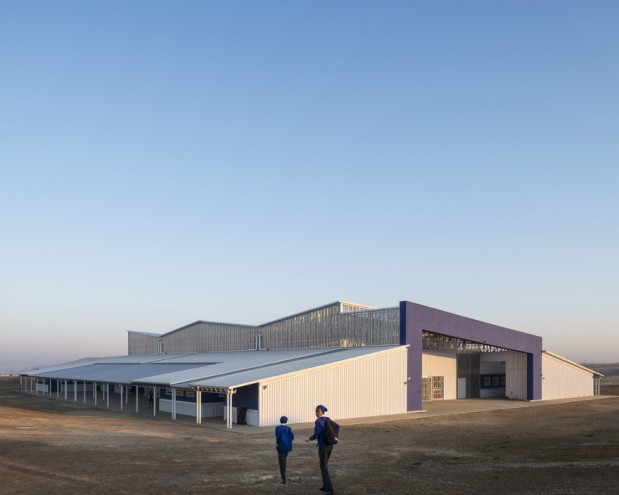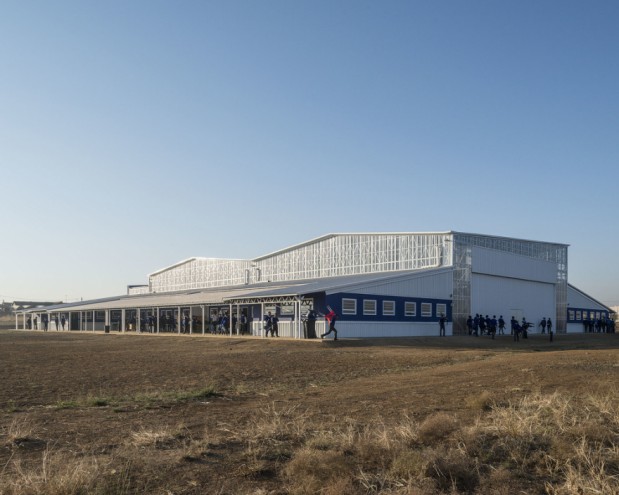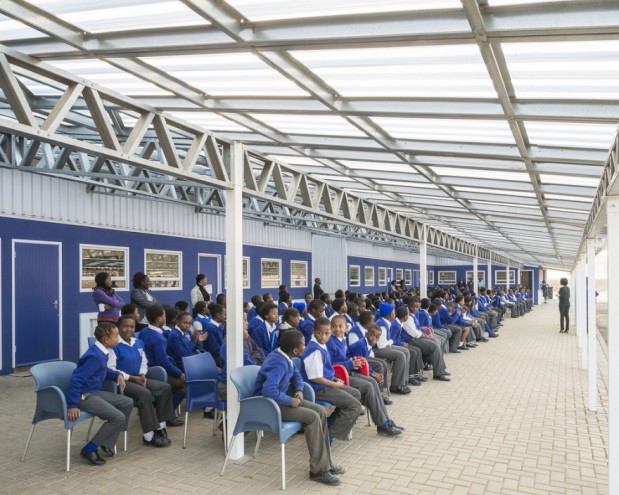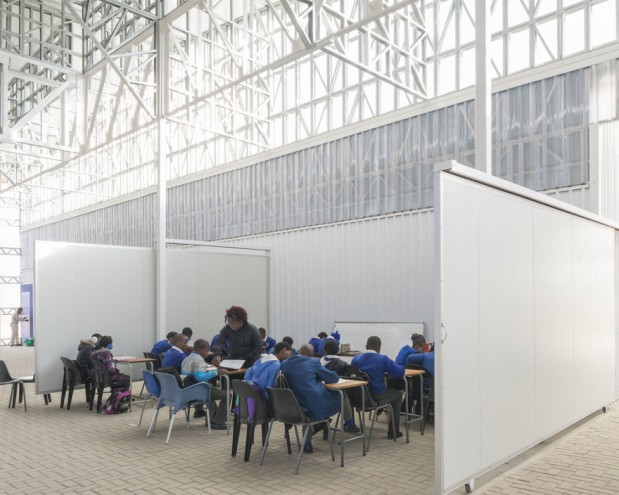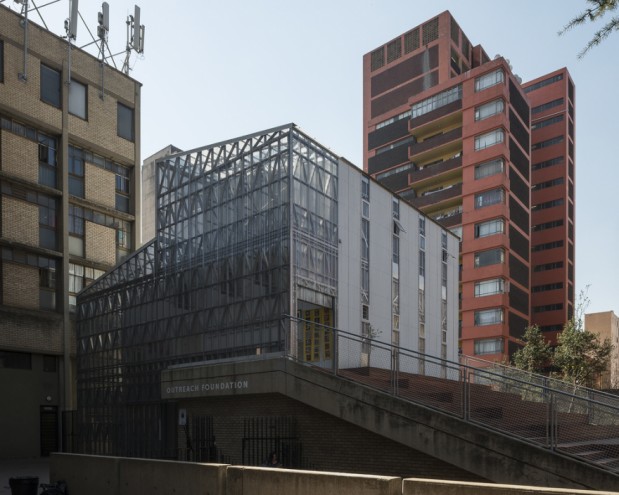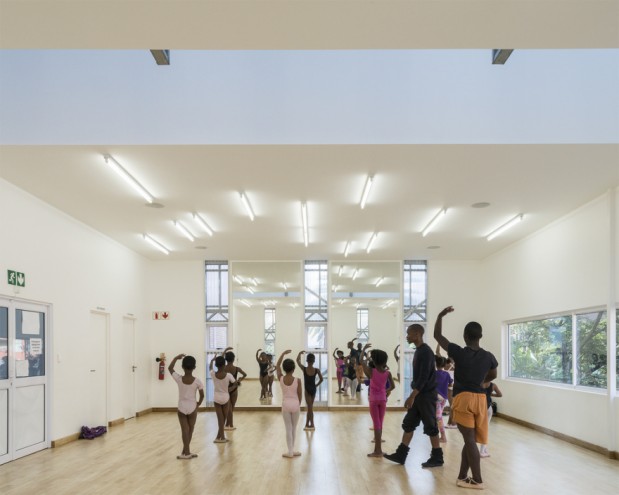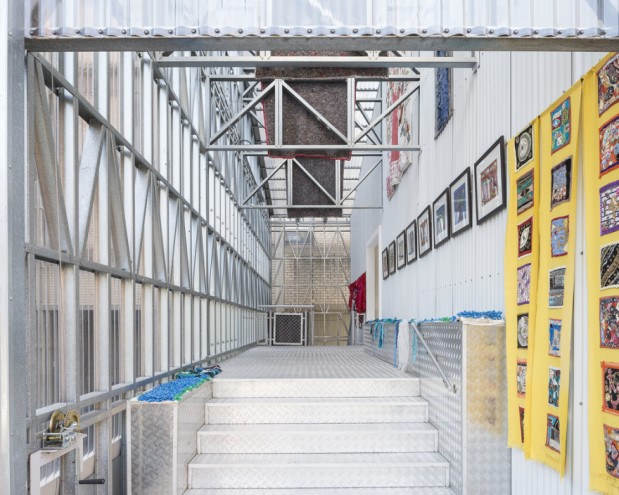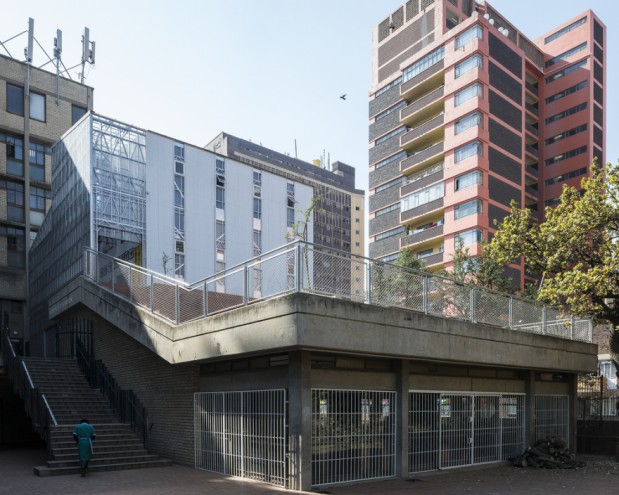From the Series
Local Studio is an architecture and urban design studio located in Johannesburg’s historical Brixton suburb. Thomas Chapman founded the studio in 2011 and they are largely focussed on creating public buildings and urban design schemes that promote social development. Their work in Johannesburg’s infamous Hillbrow, an inner city residential neighbourhood, is most exemplary of this.
The suburb is home to Ponte City, the most distinctive and well-known building on the Johannesburg skyline. Among native Johannesburgers, the area has generally been written off because of the urban issues such as population density, high unemployment, poverty and crime that plague the neighbourhood. Rather than be dissuaded, the Local Studio team is developing unique approaches to architectural practices that create harmony between private business, communities, and the state.
We interview Local Studio founder Thomas Chapman to get the insider insight into the harmonious Local Studio approach to urban design and architectural practice.
Tell us about the Local Studio ethos?
We place public space at the forefront of any design process; we are bold in our experimentation with new construction technologies in our pursuit to find lasting, cost-effective solutions to urban spatial problems. We are deeply concerned with the role that a building's form and materiality can play in underdeveloped and under-managed contexts like former Apartheid townships and Johannesburg’s central business district.
Briefly tell us about the work you did for the Outreach Foundation Community Centre?
We were appointed to design a new community centre for a non-governmental organisation in Hillbrow called the Lutheran Community Outreach Foundation. The organisation had a number of outreach initiatives catering to underprivileged youth in the area. In 2012, they received a grant from the National Lottery to construct a purpose-built facility to house these functions.
Hillbrow is notoriously avoided by Joburgers. Why build there?
A minority middle class in Joburg mostly avoids Hillbrow. It is a magnet to almost a million other people because it offers affordable housing and social services. Our client had been offering social and cultural services in Hillbrow for over five years by the time we were introduced to the project. What’s more, they are a product of the Hillbrow Lutheran Church, which is on the same site, and has had a presence in Hillbrow for over 100 years.
What distinguishes the South African architectural landscape from the rest of the continent and the world?
South Africa, Johannesburg specifically, is unique in that it has very highly developed infrastructure in certain areas, mostly established during the Apartheid era and then areas of complete underdevelopment at the city peripheries. For instance, our highway system is comparable to the best in the world but a large majority of our urban population do not have access to safe drinking water and electricity.
Obviously this also occurs in other cities in Africa, but I do not believe it is of a comparable scale. This duality plays a huge role in defining the type of architecture that gets produced and distinguishes our processes and products from others in the world.
We place public space at the forefront of any design process," - Thomas Chapman, Founder and Principal, Local Studio
Tell us about the design for the African School of Excellence?
This school design brings together a typical East Rand industrial, warehouse factory typology and a specialised spatio-educational programme designed by the public benefit organisation and our client, the African School for Excellence. The result is a single new-built structure made up of classroom clusters arranged around a vast central space, which is roofed with a portal frame to create the school hall. The building is built using a combination of structural and light-gauge steel and was constructed in under six months at a per square meter budget lower than Reconstruction and Development Programme housing.
Can architecture be a vehicle for social change?
I believe that architecture can only be effective as such when it works in support of more fluid instruments of social change like education and entrepreneurship. Within these parameters, I believe the most effective tool we have is the creation of responsive public space. In doing so, we as architects need to learn to read and understand opportunities for positive support and intervention in informal/ 'un-designed' urban environments.
Tell us what’s next for Local Studio? Are you working on anything that you care to share?
We have just launched an exhibition of four of our most recently completed social infrastructure projects in Johannesburg. We are planning to travel this exhibition to Cape Town in February 2016. Apart from this, we are involved in a number of exciting regeneration projects in the Johannesburg CBD, most notably, the pedestrianization of a vehicular street to create a linear park in Braamfontein.
Thomas Chapman will be speaking at Design Indaba Conference 2016. Book now.

